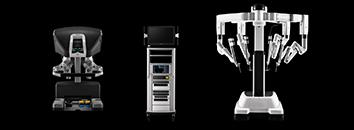Procedures Performed in Cranio-Maxillofacial Surgery
Treatment of conditions affecting the cranial (skull) and maxillofacial (face and jaws) areas is the goal of a variety of surgical procedures performed in craniomaxillofacial surgery. Professionals in the field of CranioMaxillofacial Surgery perform these surgeries to rectify abnormalities, reinstate functionality, and enhance appearance. Some common craniomaxillofacial surgeries include:
This is a corrective surgery to realign the jaws, to address issues like bite misalignment, TMJ disorders, and facial asymmetry. This procedure aims to enhance function and facial harmony, often improving breathing, chewing, and speaking. Orthognathic surgery employs computer simulations and virtual planning to map out surgical movements, ensuring accuracy in correcting jaw misalignments.
This surgery is used for the restoration of facial features following trauma, tumour removal, or congenital abnormalities. It involves intricate surgeries to rebuild facial bones, tissues, and aesthetics, aiming to improve both function and appearance. Facial reconstruction procedures integrate innovative methods, such as tissue engineering and microsurgery to restore form and function of damaged areas.
This is a surgical intervention to address skull deformities, particularly in cases of craniosynostosis, where premature fusion of skull bones causes abnormal head shapes. This procedure aims to reshape the skull, allowing normal brain growth and improving appearance.
This procedure is a multistage surgery to close gaps in the lip and palate, enabling proper function in speech and eating, along with improved aesthetics. These surgeries often involve intricate techniques to reconstruct affected areas and promote normal development.
In-depth surgical repair for complicated craniofacial deformities brought on by birth defects or injuries. It entails a number of surgeries to address different anatomical problems with the face and skull.
This is a surgical treatment for a range of disorders affecting the orbit, such as tumours, congenital defects, and fractures. Both eye function and appearance are intended to be preserved or restored.
This surgery involves treatment of facial fractures and soft tissue injuries caused by accidents, falls, or trauma. Surgeons use various techniques to realign fractured bones and repair damaged tissues, restoring both form and function.















